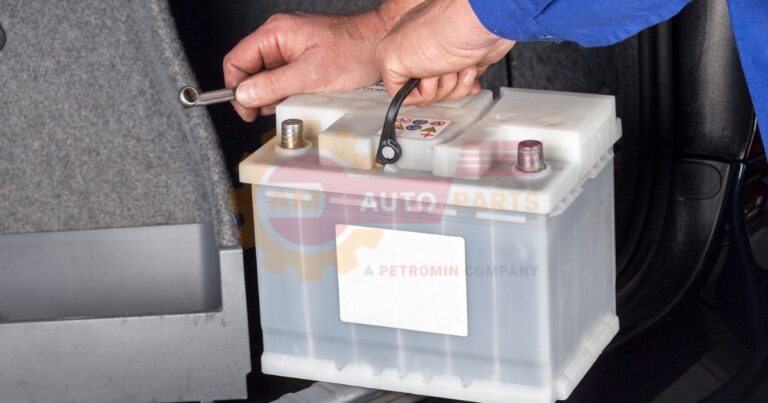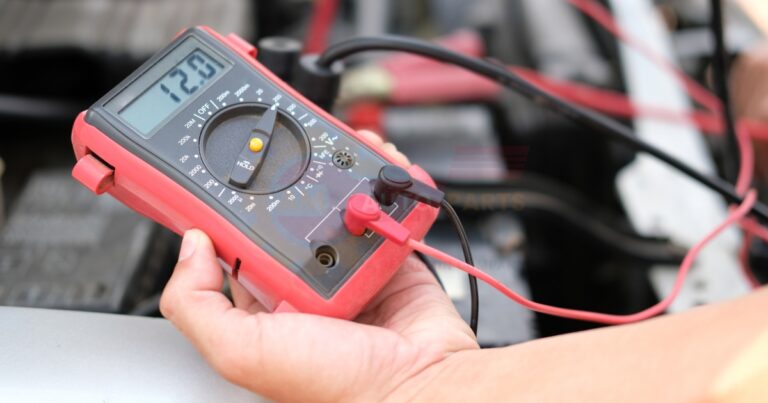Safety Precautions When Handling Batteries: Essential Guidelines for Battery Safety
Handling batteries safely is crucial to prevent accidents and ensure longevity. Whether you’re dealing with small household batteries or large industrial ones, understanding the risks and following proper guidelines is essential. This comprehensive guide will walk you through the necessary precautions and best practices for battery safety.
Battery Types and Associated Risks
Different types of batteries come with their own set of risks. Knowing these can help you handle them more safely.
Lead-Acid Batteries
Lead-acid batteries are commonly used in vehicles and backup power systems. They contain sulfuric acid, which can cause burns and release hydrogen gas, posing explosion risks. Proper handling and storage are vital to prevent accidents.
- Risks : Acid burns, hydrogen gas explosion
- Handling Tips : Use in well-ventilated areas, avoid overcharging
Lithium-Ion Batteries
Lithium-ion batteries power most of our portable electronics. They are lightweight and efficient but can overheat and catch fire if damaged or improperly charged.
- Risks : Overheating, fire hazards
- Handling Tips : Avoid puncturing, use appropriate chargers
Electric Vehicle (EV) Batteries
EV batteries are large and powerful, requiring special care. They operate at high voltages, which can be dangerous if mishandled.
- Risks : High voltage, thermal runaway
- Handling Tips : Follow manufacturer guidelines, ensure proper insulation
Proper Handling and Storage Techniques
Safe handling and storage of batteries can prevent accidents and extend their lifespan.
Safe Lifting and Transportation
When moving batteries, especially large ones, proper lifting techniques are crucial to avoid injury and damage.
- Use proper lifting equipment : Utilize dollies or forklifts for heavy batteries.
- Secure during transport : Ensure batteries are stable and won’t tip over.
Ideal Storage Conditions
Storing batteries correctly can prevent leaks and prolong their life.
- Temperature control : Store in a cool, dry place.
- Avoid direct sunlight : Prevents overheating and degradation.
Preventing Short Circuits
Short circuits can cause fires and damage batteries. Proper precautions can mitigate these risks.
- Use insulated tools : Prevent accidental contact between terminals.
- Keep terminals covered : Use caps or covers to avoid contact with metal objects.
Personal Protective Equipment (PPE) for Battery Handling
Wearing the right PPE can protect you from potential hazards when handling batteries.
Eye and Face Protection
Protective eyewear is essential to shield against acid splashes and debris.
- Safety goggles : Use goggles that fit snugly and provide full coverage.
- Face shields : Consider additional face protection for high-risk tasks.
Hand and Body Protection
Gloves and protective clothing can prevent skin contact with harmful substances.
- Acid-resistant gloves : Essential for handling lead-acid batteries.
- Long sleeves and aprons : Protects against spills and splashes.
Respiratory Protection
In environments with poor ventilation, respiratory protection may be necessary.
- Masks or respirators : Use when dealing with fumes or dust.
- Ensure proper fit : Check that masks seal properly around the face.
Dealing with Battery Acid and Electrolyte Spills
Accidents happen, and knowing how to respond to spills is crucial for safety.
Immediate Response Procedures
Quick action can minimize damage and injury from spills.
- Evacuate the area : Ensure safety before addressing the spill.
- Use spill kits : Have kits readily available for immediate use.
Neutralization and Cleanup Methods
Proper cleanup prevents further hazards and environmental damage.
- Neutralize acid : Use baking soda or a commercial neutralizer.
- Dispose of waste properly : Follow local regulations for hazardous waste.
Proper Disposal of Contaminated Materials
Contaminated materials must be disposed of correctly to prevent environmental harm.
- Seal in containers : Use appropriate containers for hazardous waste.
- Follow local guidelines : Adhere to regulations for disposal.
Safe Charging Practices and Electrical Hazards
Charging batteries safely is essential to prevent overheating and electrical hazards.
Choosing the Right Charger
Using the correct charger ensures safe and efficient charging.
- Match voltage and capacity : Use chargers designed for your battery type.
- Avoid cheap alternatives : Low-quality chargers can be dangerous.
Ventilation Requirements
Proper ventilation prevents the buildup of gases during charging.
- Charge in open areas : Ensure good airflow around charging stations.
- Avoid enclosed spaces : Prevents accumulation of explosive gases.
Preventing Overcharging and Overheating
Overcharging can damage batteries and pose safety risks.
- Use smart chargers : Automatically stop charging when full.
- Monitor temperature : Check for excessive heat during charging.
Emergency Procedures and First Aid
Knowing how to respond to battery-related emergencies can save lives and prevent further injury.
Burns from Battery Acid
Immediate treatment can reduce the severity of acid burns.
- Rinse with water : Flush the affected area with plenty of water.
- Seek medical attention : Get professional help for severe burns.
Electric Shock Treatment
Quick response to electric shock can be life-saving.
- Turn off power : Disconnect the power source immediately.
- Call emergency services : Seek medical help for the victim.
Fire Safety and Extinguishing Methods
Battery fires require specific extinguishing methods to be effective.
- Use appropriate extinguishers : Class D extinguishers for metal fires.
- Evacuate and call for help : Ensure safety and get professional assistance.
Environmental Considerations and Proper Disposal
Proper disposal of batteries is crucial to protect the environment and comply with regulations.
Recycling Lead-Acid Batteries
Lead-acid batteries are highly recyclable, and proper recycling is essential.
- Return to retailers : Many stores offer recycling programs.
- Follow local laws : Adhere to regulations for battery recycling.
Lithium-Ion Battery Disposal Challenges
Lithium-ion batteries require special handling due to their chemical composition.
- Use designated facilities : Dispose of at approved recycling centers.
- Avoid landfill disposal : Prevents environmental contamination.
Compliance with Local Regulations
Adhering to local laws ensures safe and legal disposal of batteries.
- Stay informed : Keep up with changes in regulations.
- Document disposal : Maintain records of battery disposal activities.
Training and Education for Battery Handlers
Proper training ensures that handlers are aware of safety protocols and best practices.
Safety Protocols and Best Practices
Training programs should cover essential safety measures for battery handling.
- Regular training sessions : Keep staff updated on safety practices.
- Hands-on demonstrations : Provide practical experience with safety equipment.
Recognizing Warning Signs and Hazards
Being able to identify potential hazards can prevent accidents.
- Visual inspections : Regularly check batteries for damage or leaks.
- Listen for unusual sounds : Be alert to hissing or popping noises.
Regular Safety Refresher Courses
Ongoing education reinforces safety knowledge and skills.
- Schedule periodic courses : Ensure all staff are up-to-date.
- Include new developments : Cover recent changes in technology and regulations.
Specialized Safety Measures for EV Batteries
Handling EV batteries requires specific precautions due to their size and power.
High-Voltage System Precautions
EV batteries operate at high voltages, necessitating special care.
- Use insulated tools : Prevent accidental contact with live parts.
- Follow lockout/tagout procedures : Ensure systems are de-energized before work.
Thermal Runaway Prevention
Preventing thermal runaway is crucial to avoid fires and explosions.
- Monitor temperature : Use sensors to detect overheating.
- Implement cooling systems : Ensure adequate heat dissipation.
Safe Disconnection and Isolation Procedures
Proper disconnection procedures prevent accidental activation of EV systems. Recycling battery advancements are making it easier to reuse old batteries Scientists are finding new ways to take apart batteries and save their parts for future use Heat degrades batteries making them lose power faster and not last as long Keeping batteries cool helps them work better and stay strong for more time
Electric vehicle safety is about making sure electric cars are safe to drive and use These cars have special features to protect people from electric shocks and battery problems Battery charging troubles can be frustrating when your device won’t power up Try different chargers or outlets to fix
Automotive energy solutions help cars and trucks use different types of power to run These solutions include electric batteries fuel cells and cleaner fuels for vehicles
- Follow manufacturer guidelines : Adhere to specific disconnection steps.
- Use isolation devices : Ensure systems are safely deactivated.
Legal and Regulatory Compliance
Compliance with legal standards ensures safe and responsible battery handling.
OSHA Standards for Battery Handling
OSHA provides guidelines to ensure workplace safety when handling batteries.
- Adhere to safety standards : Follow OSHA regulations for battery handling.
- Conduct regular audits : Ensure compliance with safety protocols.
REACH Regulation for Chemical Safety
REACH regulations govern the safe use of chemicals in batteries.
- Register substances : Ensure compliance with REACH requirements.
- Monitor chemical use : Keep track of substances used in battery production.
Transportation of Dangerous Goods Regulations
Transporting batteries requires adherence to specific regulations to ensure safety.
- Use approved packaging : Follow guidelines for safe transport.
- Label shipments correctly : Ensure proper identification of hazardous materials.
FAQ’s
What are the main safety concerns when handling batteries?
The main safety concerns when handling batteries include the risk of acid burns, electric shock, and fire hazards. Proper handling, storage, and disposal are crucial to mitigate these risks. Using appropriate personal protective equipment and following safety guidelines can significantly reduce the likelihood of accidents.
How should batteries be stored safely?
Batteries should be stored in a cool, dry place away from direct sunlight and heat sources. Proper storage prevents leaks and prolongs battery life. It’s also important to keep batteries in their original packaging or use protective covers to prevent short circuits.
What protective equipment is necessary when working with batteries?
When working with batteries, it’s essential to wear safety goggles, acid-resistant gloves, and protective clothing. These items protect against acid splashes, burns, and other potential hazards. In environments with poor ventilation, respiratory protection may also be necessary.
By following these guidelines and understanding the risks associated with different types of batteries, you can ensure safe handling and prevent accidents. Stay informed and prioritize safety to protect yourself and the environment.






